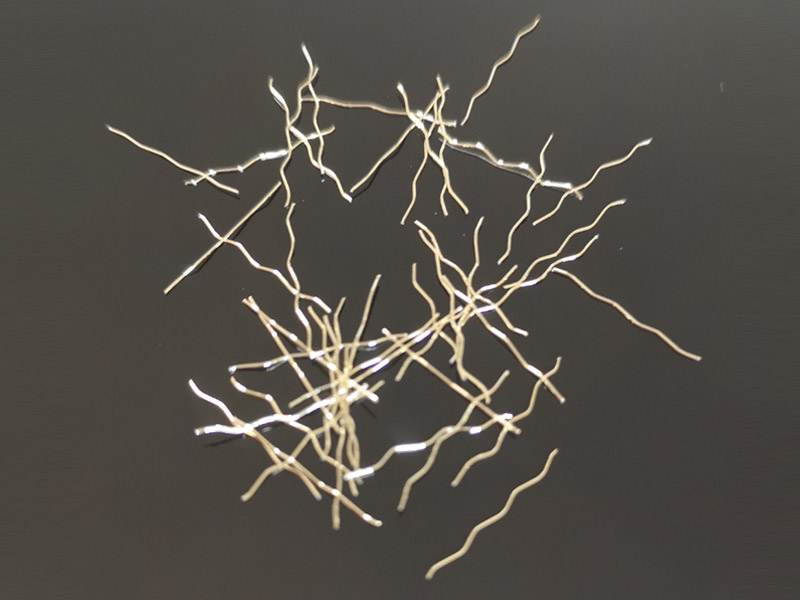Innovations in metal fibers for concrete: revolutionizing infrastructure construction
 May 23, 2023|
May 23, 2023| View:704
View:704Metal fibers for concrete are becoming increasingly popular as reinforcement materials in construction projects. These fibers are added to concrete mixtures to improve strength and durability, making them ideal for high-performance infrastructure projects. Recent innovations in the field have led to exciting insights into metal fibers that could revolutionize the construction industry.
The benefits of using metal fibers to reinforce concrete:

(1) The ability to increase the tensile strength of the material.
Tensile strength is an essential property of concrete because it helps the material withstand tensile forces, such as those caused by wind or seismic activity. Metal fibers strengthen concrete by bridging the gap between cracks that form during the curing and hardening process. This process reduces the formation of new cracks and prevents existing cracks from becoming larger, thus improving the overall performance of the concrete.
(2) Ability to reduce shrinkage cracking.
Shrinkage occurs when water evaporates from the concrete mixture, resulting in a reduction in volume. This shrinkage causes the material to crack, weakening it over time. By adding metal fibers to the mixture, the fibers act as an internal reinforcement, inhibiting concrete shrinkage and reducing the potential for shrinkage cracks to form.
(3) The durability of concrete structures can be enhanced.
Durability is a critical factor in construction, especially in areas with harsh weather conditions or heavy traffic. Concrete exposed to freeze-thaw cycles or heavy loads can degrade over time, leading to costly repairs and replacements. However, by adding metal fibers to the mix, concrete becomes more resistant to wear and tear and lasts longer.
One of the most exciting developments in the field of metal fibers for concrete is the use of advanced materials, such as carbon and stainless steel fibers. These fibers have superior mechanical properties compared to traditional steel fibers, making them a better choice for high-performance applications. For example, carbon fibers have high stiffness and tensile strength, making them ideal for projects that require a lightweight but strong material. On the other hand, stainless steel fibers are more resistant to corrosion than traditional steel fibers, making them suitable for coastal areas or high salt environments.
Overall, these innovative insights into metal fibers for concrete demonstrate the great potential of this material in the construction industry. By using metal fibers, engineers and builders can construct stronger, more durable and longer lasting infrastructure that can withstand a variety of environmental factors and loads. The use of advanced materials such as carbon fiber and stainless steel fibers adds even more possibilities for future innovation.
In summary, metal fibers for concrete are an exciting development in the field of construction materials. With the ability to increase tensile strength, reduce shrinkage cracking and enhance durability, metal fibers offer many advantages over traditional reinforcing materials. In addition, technological advances allow the use of advanced materials such as carbon and stainless steel fibers, further expanding the possibilities for innovation in this field. As the construction industry continues to evolve, metal fibers for concrete will undoubtedly play an important role in creating a high-performance infrastructure that meets the needs of modern society. If you need more detailed information, please feel free to contact us!




